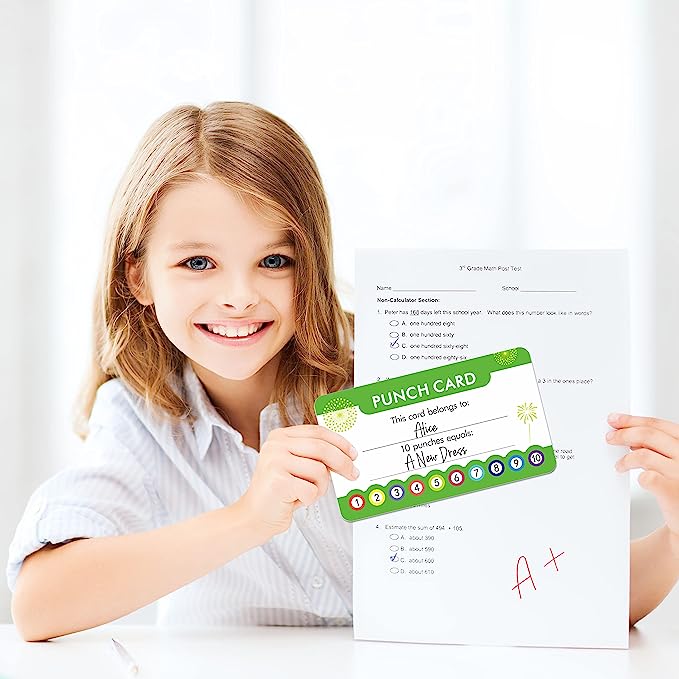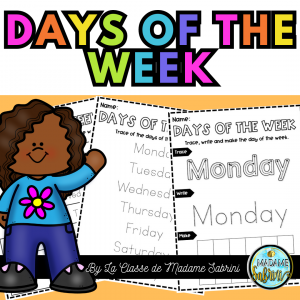This post may contain affiliate links which means I may receive a commission for purchases made through links. I will only recommend products that I have personally used! Learn more on my Private Policy page.
Every teacher faces the challenge of having to deal with student classroom behavior at some point in their career. Whether it’s a student talking out of turn, being disruptive, or refusing to follow instructions, managing difficult behavior can be one of the most challenging aspects of teaching. However, it is possible to nip bad behavior in the bud and prevent it from escalating. In this blog post, we’ll look at some effective strategies to help teachers diffuse student classroom behavior before it has a chance to get out of hand.
Recognizing the Signs of Difficult Behavior
Dealing with difficult behavior in the classroom can be a challenge for even the most experienced educators. But before we can address these behaviors, we must first recognize them. There are various signs that may indicate difficult behavior in the classroom. These signs include disruption, aggression, defiance, disengagement, and inattention.
Disruptive behavior includes things like talking out of turn, making unnecessary noise, and engaging in activities that distract others. Aggression may involve physical or verbal attacks on peers or staff members. Defiance often involves disobeying classroom rules or disregarding instructions given by the teacher. Disengagement can be observed through a lack of interest or participation in classroom activities, while inattention involves the inability to focus or concentrate on assigned tasks.
When we notice these signs of difficult behavior in the classroom, it is important to act swiftly to prevent the situation from escalating. However, this requires an understanding of the root cause of the behavior, which we will discuss in the next section.
Understanding the Root Cause of the Behavior
When dealing with difficult behavior in the classroom, it is important to look beyond the surface level of the behavior and try to understand its root cause. This may involve examining the student’s background, home life, and personal experiences to gain a better understanding of why they may be acting out in certain ways.
For example, a student who consistently disrupts class may be struggling with a learning disability or attention deficit disorder. Alternatively, a student who is consistently defiant or aggressive may be dealing with difficult family dynamics or a traumatic past experience.
By understanding the root cause of a student’s behavior, teachers can develop targeted interventions and support strategies that are tailored to their specific needs. This may involve working with school counselors, social workers, or other professionals to develop a comprehensive plan for addressing the underlying issues and promoting positive behavioral change.
In addition, understanding the root cause of a student’s behavior can help teachers to respond in a more empathetic and compassionate manner, which can in turn foster better relationships with their students and create a more positive and supportive classroom environment.
Ultimately, when dealing with difficult behavior in the classroom, it is important to approach each student as an individual and work to understand the underlying factors that may be contributing to their behavior. With patience, compassion, and the right support strategies in place, teachers can help even the most challenging students to succeed and thrive in the classroom.
Establishing Clear Classroom Rules and Expectations
One of the most important ways to prevent difficult behavior from escalating in the classroom is by establishing clear rules and expectations. This not only helps students understand what is expected of them but also provides a framework for behavior management.
When creating classroom rules and expectations, it’s important to involve students in the process. Ask for their input and feedback to ensure that they feel ownership over the rules. This can help to increase buy-in and compliance.
Your classroom rules should be clear and specific, with consequences clearly stated for breaking them. Be sure to explain why each rule is important and how it relates to creating a safe and positive learning environment.
In addition to rules, it’s also important to establish clear expectations for behavior. For example, you may expect students to listen respectfully to others, ask for permission before leaving the room, or turn in assignments on time. Again, be clear and specific, and provide positive reinforcement when students meet or exceed expectations.
It’s important to note that rules and expectations should be consistent across the classroom, and you should hold all students accountable for following them. This consistency can help to prevent misunderstandings or resentment from students who feel that they are being treated unfairly.
Overall, establishing clear classroom rules and expectations is a foundational step in preventing difficult behavior. By providing a structure and framework for behavior management, you can help students understand what is expected of them and prevent small issues from turning into larger ones.
Using Positive Reinforcement Techniques
In addition to setting clear rules and expectations, it’s also important to focus on positive reinforcement techniques to encourage positive behavior and discourage difficult behavior. Positive reinforcement involves rewarding good behavior with praise, encouragement, and other incentives to help motivate students to continue behaving positively. Here are a few positive reinforcement techniques to consider:
- Verbal Praise: This is the simplest form of positive reinforcement, but also one of the most effective. When a student demonstrates positive behavior, provide verbal praise by acknowledging their good work. For example, “Great job paying attention today, John!” or “Thank you for being such a good listener, Jane.”
- Positive Notes: Sending positive notes home to parents or guardians can be an effective way to reinforce good behavior and show students that their efforts are being noticed. Notes can be sent for a range of reasons, such as demonstrating kindness, being a good listener, or working hard on an assignment.
- Token Economies: Token economies involve providing students with tokens or other small rewards when they exhibit positive behavior. Tokens can be collected and exchanged for prizes or other rewards. This method is particularly effective for younger students.
- Positive Behavior Contracts: Positive behavior contracts are written agreements between students and teachers that outline specific behaviors that the student will work on, and the rewards that they will receive for meeting those goals. Contracts should be clear and concise, and reviewed frequently to ensure that students are meeting expectations.
By implementing positive reinforcement techniques, you can help students understand that good behavior is valued and rewarded in the classroom. However, it’s important to remember that every student is different and what works for one may not work for all. Be flexible and willing to adjust your strategies as needed to best meet the needs of your students.
Providing Individualized Attention and Support
While establishing clear classroom rules and using positive reinforcement can be effective, sometimes students require additional attention and support to manage their behavior. Providing individualized attention can help students feel valued and supported, which can positively impact their behavior in the classroom.
There are a variety of ways to provide individualized attention and support, depending on the student’s needs. Here are a few ideas:
- Meet with the student one-on-one to discuss their behavior and brainstorm solutions together. This can help the student feel heard and valued while also working to address the behavior.
- Provide additional academic support. Sometimes students act out due to academic struggles or frustration. By providing additional academic support, such as extra tutoring or differentiated instruction, students may feel more confident and engaged in the classroom, which can lead to better behavior.
- Offer counseling or social-emotional support. Some students may be experiencing personal challenges that impact their behavior in the classroom. By offering counseling or social-emotional support, students can work through their challenges and feel more emotionally regulated, leading to improved behavior.
- Implement a behavior plan with specific goals and rewards. By creating a plan tailored to the student’s needs and interests, they may feel more invested in their own behavior and motivated to make positive changes.
Remember, every student is unique and may require different levels of support to manage their behavior in the classroom. By providing individualized attention and support, educators can help students feel valued, supported, and ultimately successful.
Implementing Consequences and Disciplinary Actions as Needed
Sometimes, despite your best efforts to diffuse difficult behavior in the classroom, you may still need to implement consequences and disciplinary actions. It’s important to do so in a fair and consistent manner, and to clearly communicate the reasoning behind the consequences.
When implementing consequences, make sure they are appropriate to the behavior and are outlined in your classroom rules and expectations. This will help ensure that students understand the consequences before any negative behavior occurs.
It’s also important to follow through with consequences consistently. If you make threats without actually following through, it can undermine your authority and make it more difficult to manage behavior in the future.
However, it’s also important to consider the context of the behavior. Sometimes, students may be acting out because of underlying issues such as stress or emotional problems. In these cases, it may be more effective to provide support and resources to help the student address the root cause of the behavior.
Additionally, it’s important to avoid disciplinary actions that are overly punitive or harsh. Instead, aim for consequences that are appropriate and help the student understand why their behavior was not acceptable.
Ultimately, your goal should be to help students understand the importance of appropriate behavior in the classroom, and to create an environment where positive behavior is encouraged and rewarded. By balancing consequences and disciplinary actions with positive reinforcement and support, you can effectively manage difficult behavior in your classroom.
Seeking Additional Resources and Support when Necessary
While the above strategies can be effective in dealing with difficult classroom behavior, there may be situations where additional resources and support are necessary. This is especially true when dealing with students who have emotional or behavioral disorders or are struggling with mental health issues.
One of the most important steps in seeking additional support is to consult with other professionals in your school or district. This could include guidance counselors, school psychologists, or social workers who can guide how to best support students who are struggling with difficult behavior.
Another option is to involve parents or guardians in the process. Parents can be a valuable resource when it comes to understanding a student’s behavior patterns and working together to develop strategies to manage these behaviors.
In some cases, it may be necessary to involve outside professionals such as therapists or behavioral specialists. These individuals can provide more intensive support and work with students to develop coping strategies that can be used both in and out of the classroom.
Ultimately, dealing with difficult behavior in the classroom can be a challenging and complex process. However, by being proactive and taking steps to recognize, understand, and manage these behaviors, you can create a positive learning environment for all students. And when additional support is necessary, don’t hesitate to reach out for help and guidance. Together, we can work to ensure that every student has the opportunity to succeed.




















